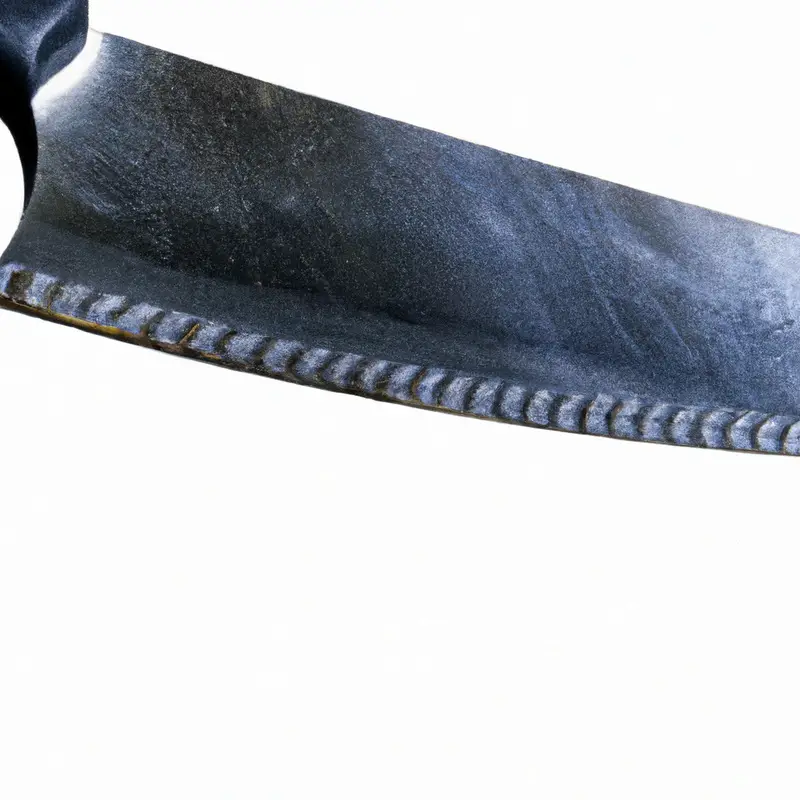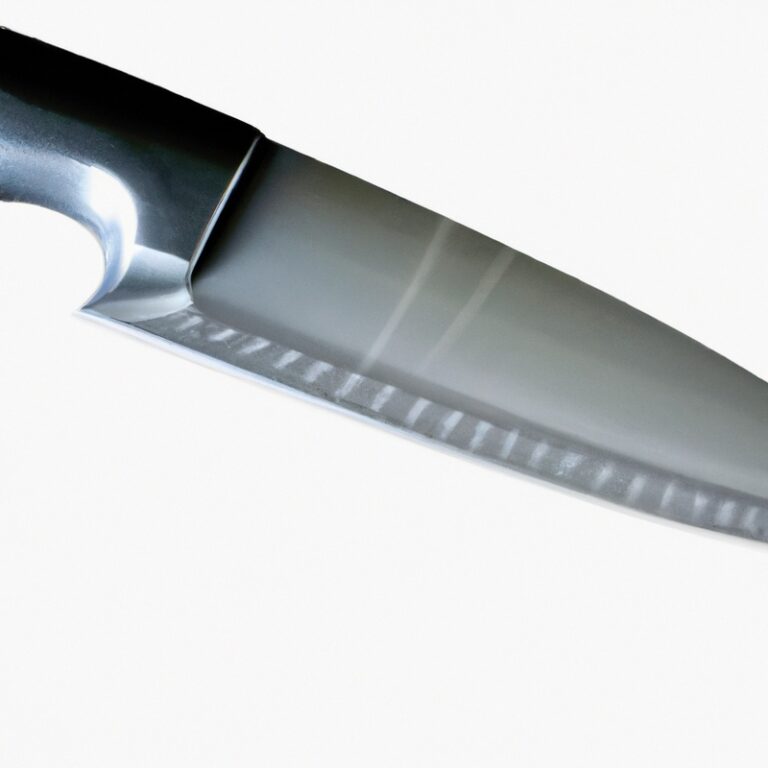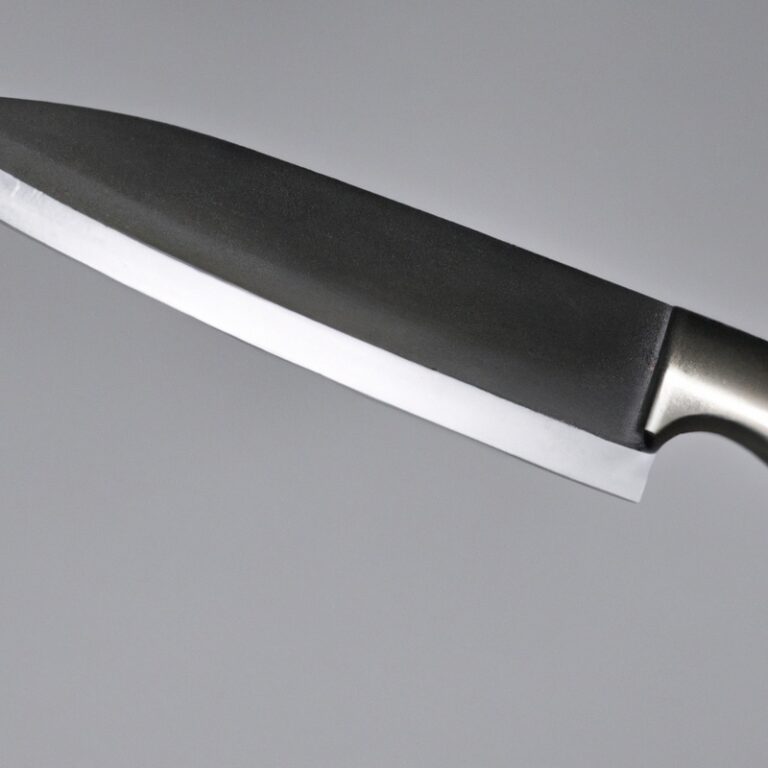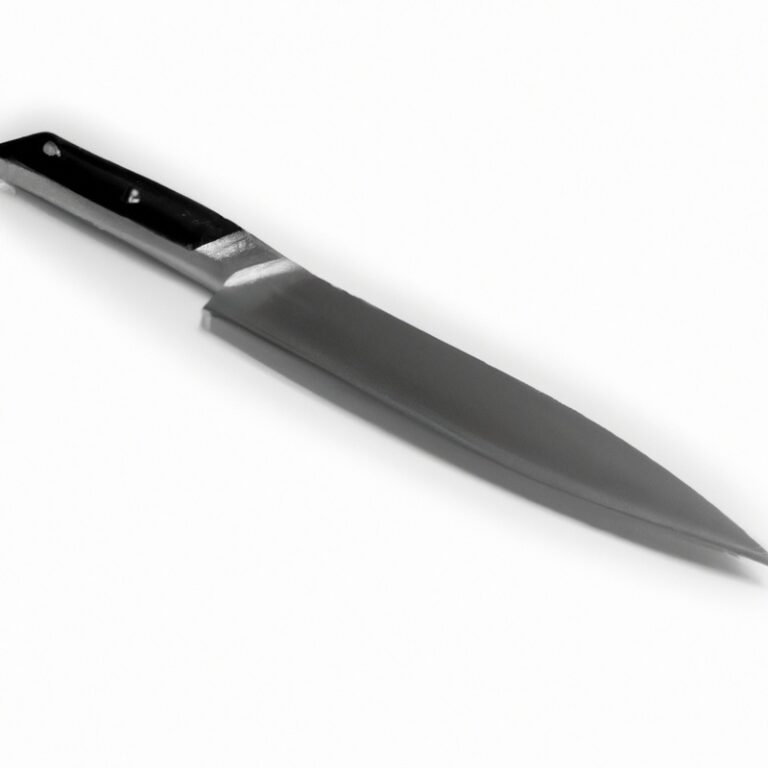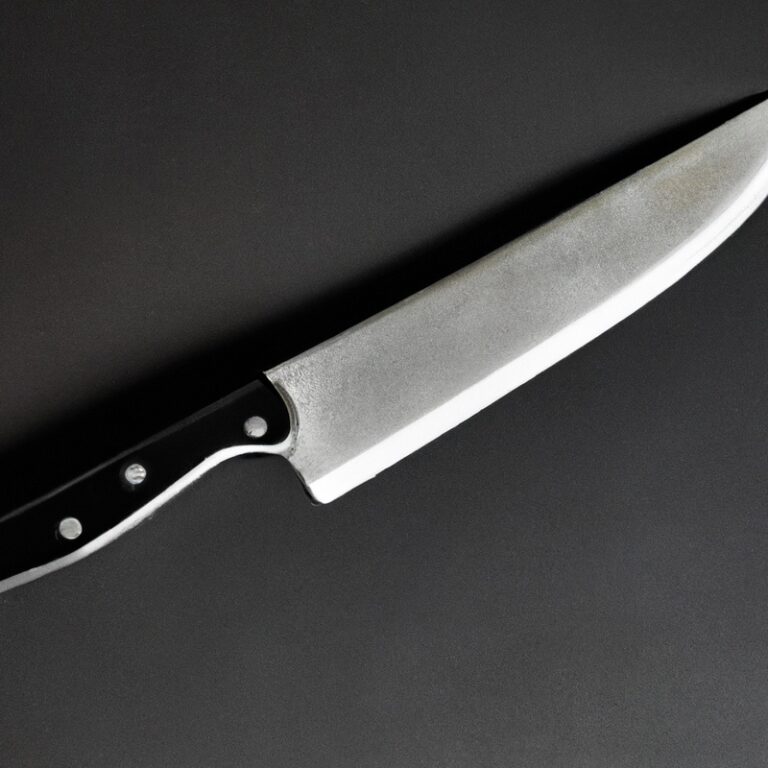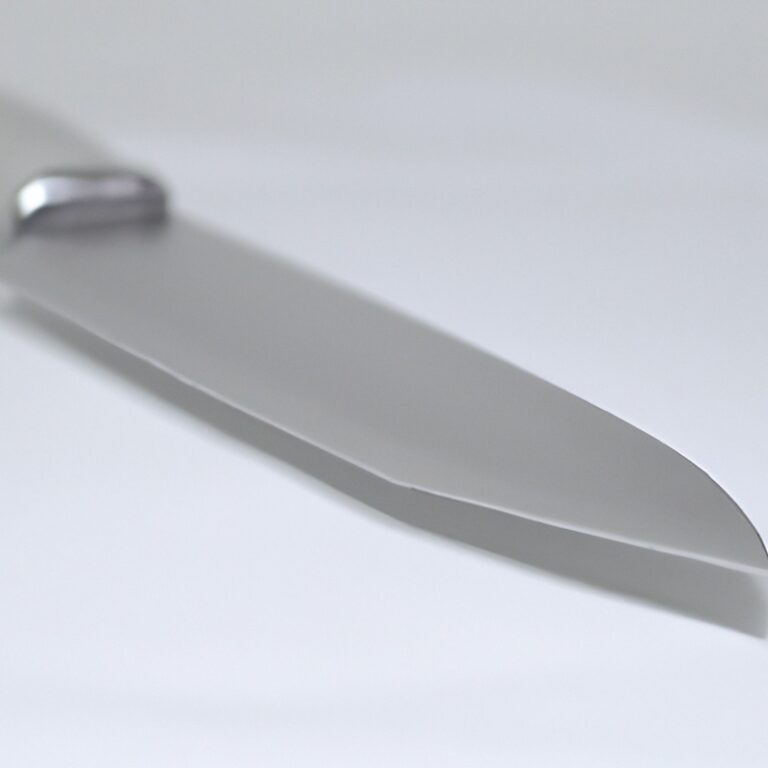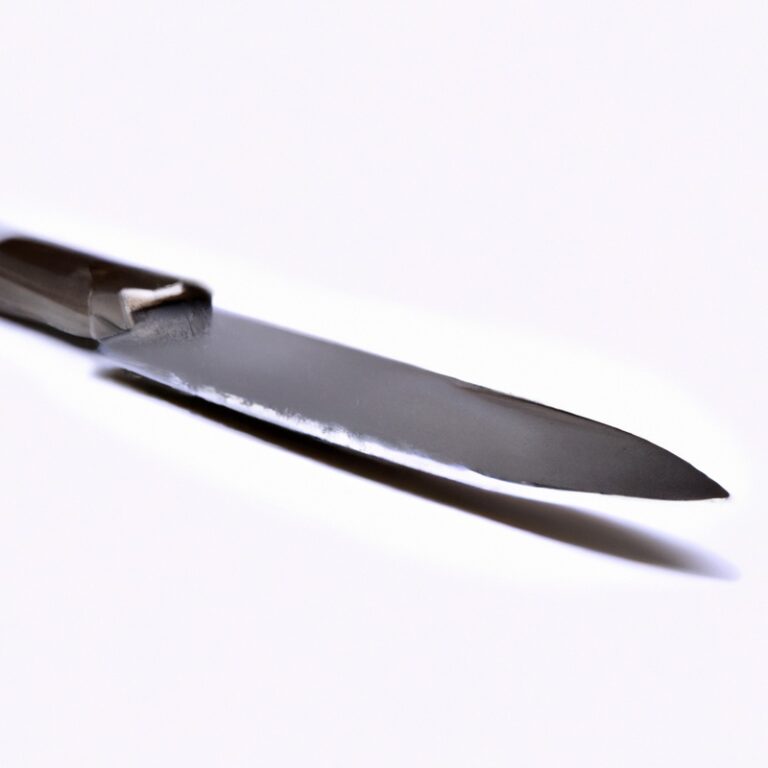What Are The Benefits Of Using a Serrated Knife For Slicing Bread?
Key Takeaways:
- Serrated knives have jagged teeth that grip bread better, resulting in cleaner slices without squishing or tearing.
- The saw-like motion of a serrated knife allows for effortless cutting through crusty bread, minimizing crumbs.
- Serrated knives are versatile and can be used to slice other foods with tough exteriors, such as tomatoes or citrus fruits.
- The serrated edge of the knife stays sharp for longer, requiring less frequent sharpening compared to straight-edge knives.
Are you tired of ruining your freshly baked bread while attempting to slice it? Look no further! In this article, I, an expert bread enthusiast, will explain the incredible benefits of using a serrated knife for your bread slicing endeavors.
With its unique design, the serrated knife ensures clean and effortless slices, preventing your bread from getting crushed.
It also helps maintain the bread’s texture and freshness. But did you know that a serrated knife is not limited to just bread?
Stay tuned to discover its versatile uses beyond bread slicing.
Get ready to upgrade your slicing game!
| Benefits of Using a Serrated Knife for Slicing Bread |
|---|
| 1. Smooth Slicing |
| 2. Reduced Crumbs |
| 3. Minimal Crushing |
| 4. Versatility |
| 5. Safety |
Benefits of using a serrated knife for slicing bread
Clean and effortless slicing
Clean and effortless slicing is one of the main benefits of using a serrated knife for cutting bread. The small, jagged teeth on the blade grip the bread crust, allowing for smooth and accurate cuts.
This design prevents the bread from getting squashed or compressed while slicing.
With a serrated knife, you can effortlessly glide through different types of bread without exerting too much pressure. This means you can enjoy neatly sliced bread with minimal effort.
Whether you’re slicing freshly baked baguettes or delicate pastries, a serrated knife ensures a clean and perfect cut every time.
Preventing bread from getting crushed
Using a serrated knife is one of the best ways to prevent bread from getting crushed when slicing. The tooth-like serrations on the blade help grip the bread’s crust, allowing for a smooth and controlled cutting motion.
This prevents excessive pressure on the loaf, minimizing the risk of crushing or squishing the bread.
The serrations also help to create clean cuts without tearing or shredding the bread, ensuring a neat and presentable slice. So, if you want to enjoy freshly sliced bread without any crushed mess, a serrated knife is the way to go!
Maintaining bread’s texture and freshness
When it comes to maintaining the texture and freshness of bread, using a serrated knife is key. The saw-like edges of a serrated knife allow for a clean and precise cut, minimizing the amount of pressure applied to the bread.
This prevents the bread from getting squished or compressed, which can result in a loss of texture and freshness.
The sharp teeth of a serrated knife act like tiny saws, gently cutting through the crust without tearing or crushing the delicate interior. This helps to preserve the light and airy texture of the bread, ensuring it stays fluffy and soft.
Additionally, the fine serrations of the knife create small pockets of air as it slices through the bread.
These pockets help to reduce friction and prevent the knife from creating too much heat, which can lead to a loss of moisture and result in a dry or stale loaf. By using a serrated knife, you can maintain the integrity of your bread, ensuring each slice is perfectly cut without compromising its texture or freshness.
So, next time you reach for a knife to slice your loaf, consider using a serrated one for the best results.
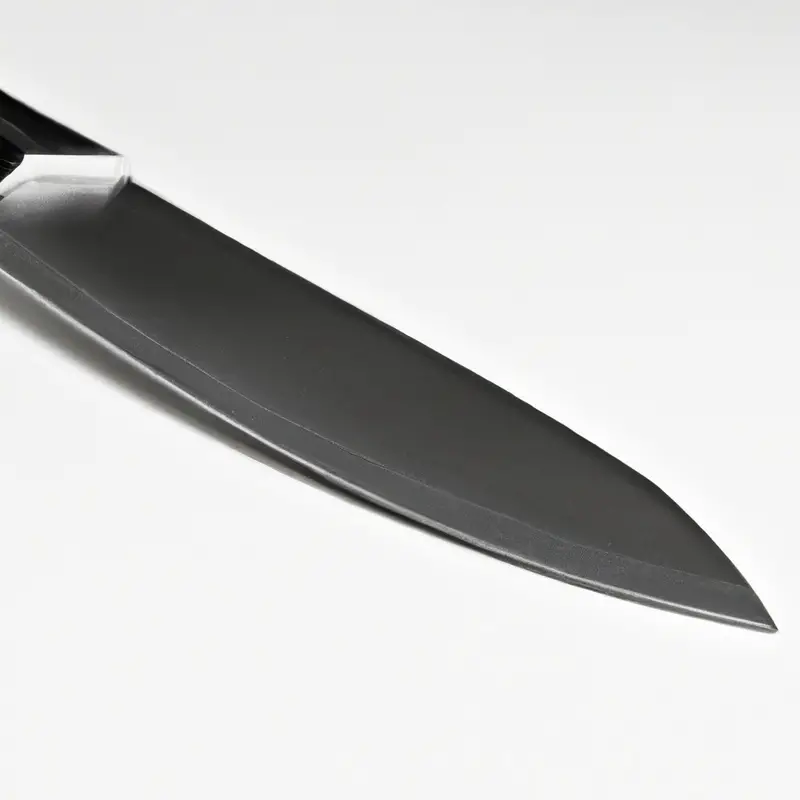
Suitable for various bread types
A serrated knife is suitable for slicing various types of bread. Whether you have a fluffy brioche, a crusty baguette, or a tender loaf of sourdough, a serrated knife can handle them all.
The sharp, jagged edges of the blade easily cut through bread without crushing it, allowing you to achieve clean and even slices.
So, no matter what type of bread you have on hand, a serrated knife is your go-to tool for effortlessly slicing through it.
Versatility beyond bread slicing
A serrated knife is not just for slicing bread! Its versatility extends to other areas in the kitchen as well. With its saw-like teeth, a serrated knife can effortlessly cut through tough-skinned fruits like tomatoes and pineapples without squishing them.
It’s also great for neatly slicing delicate cakes and pastries without causing them to crumble.
Not only that, but a serrated knife can be your go-to tool for slicing melons, citrus fruits, and even certain types of vegetables like eggplant and squash. Its serrated edge provides you with clean, precise cuts, allowing you to maintain the shape and integrity of these foods.
When it comes to versatility, a serrated knife is a kitchen essential.
With its ability to slice through a variety of foods, you’ll find yourself reaching for it again and again. Whether you’re slicing bread, fruits, or vegetables, a serrated knife will make the task much easier and more efficient.
So, keep one in your kitchen and explore its countless uses beyond bread slicing.
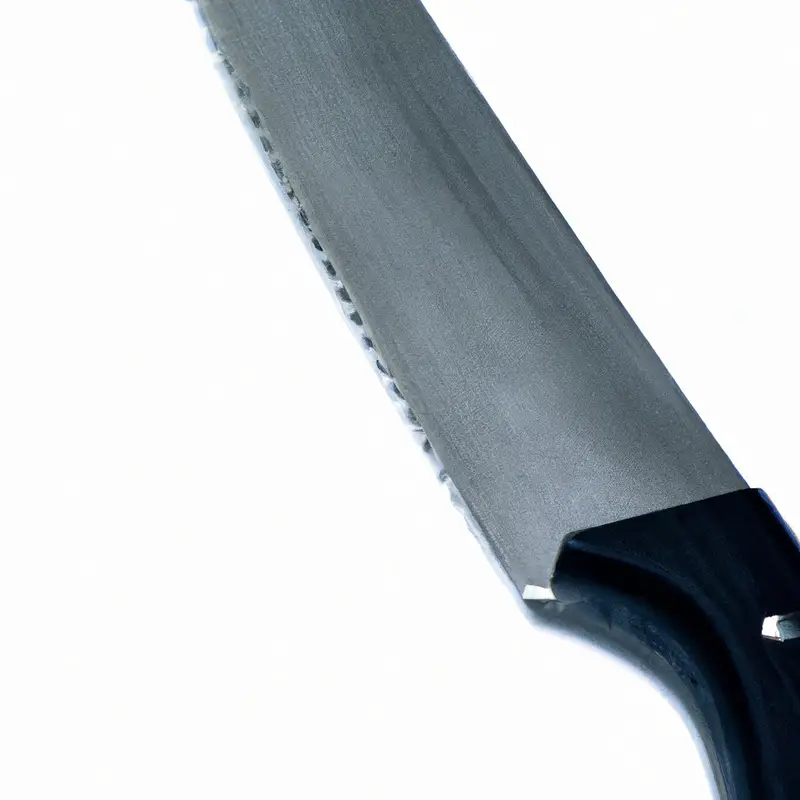
Tips for using a serrated knife effectively
Choosing the right serrated knife
When it comes to choosing the right serrated knife for slicing bread, there are a few key factors to consider. First, look for a knife with a sharp, serrated edge.
This will ensure clean and effortless slicing without crushing the bread.
Next, consider the length of the blade. A longer blade is generally more effective for slicing through larger loaves of bread, while a shorter blade may be preferred for smaller loaves or rolls.
Additionally, pay attention to the handle of the knife.
Choose one that feels comfortable and secure in your hand to prevent slippage and accidents. Lastly, consider the knife’s durability and maintenance requirements.
Look for a knife made from high-quality materials that can withstand regular use and be easily sharpened when needed.
Proper technique for slicing bread
To slice bread properly using a serrated knife, there are a few key techniques to keep in mind. Start by choosing a serrated knife with a long blade that is sharp and sturdy.
Begin by holding the bread firmly to prevent it from slipping while you slice.
Use a gentle sawing motion with the knife, applying minimal pressure to avoid crushing the bread. Cut straight down, perpendicular to the loaf, and use the length of the blade to make a clean cut.
Repeat the motion until the desired number of slices is achieved.
Remember to use caution and take your time to ensure safe and even slicing.
Knife maintenance and care
Taking care of your serrated knife is essential to ensure its longevity and effectiveness. Here are some tips for proper knife maintenance and care:
- Handwashing: Always handwash your serrated knife with warm soapy water and a soft cloth. Avoid submerging it in water for long periods or putting it in the dishwasher, as this can damage the blade and handle.
- Drying: After washing, thoroughly dry the knife with a clean towel to prevent rusting. Moisture can damage the blade and handle, so make sure it’s completely dry before storing.
- Storing: Store your serrated knife in a knife block or sheath to protect the blade and prevent any accidents. Avoid storing it with other utensils or in a cluttered drawer where it can get scratched or damaged.
- Sharpening: While serrated knives do not require frequent sharpening, they may need occasional touch-ups. Use a serrated knife sharpener or a honing rod specifically designed for serrated blades to maintain their cutting edge.
- Avoid cutting on hard surfaces: To prevent dulling or damaging the serrations, avoid cutting on hard surfaces like ceramic plates or glass cutting boards. Instead, use a wooden or plastic cutting board to preserve the integrity of the blade.
- Gentle cutting motion: When using your serrated knife, use a gentle sawing motion instead of applying excessive force. This helps maintain the sharpness of the serrations and prevents the blade from getting stuck.
- Regular inspections: Periodically check your serrated knife for any signs of damage or wear. Look for loose handles, bent blades, or dull sections. If you notice any issues, have them addressed promptly to ensure your knife remains safe to use.
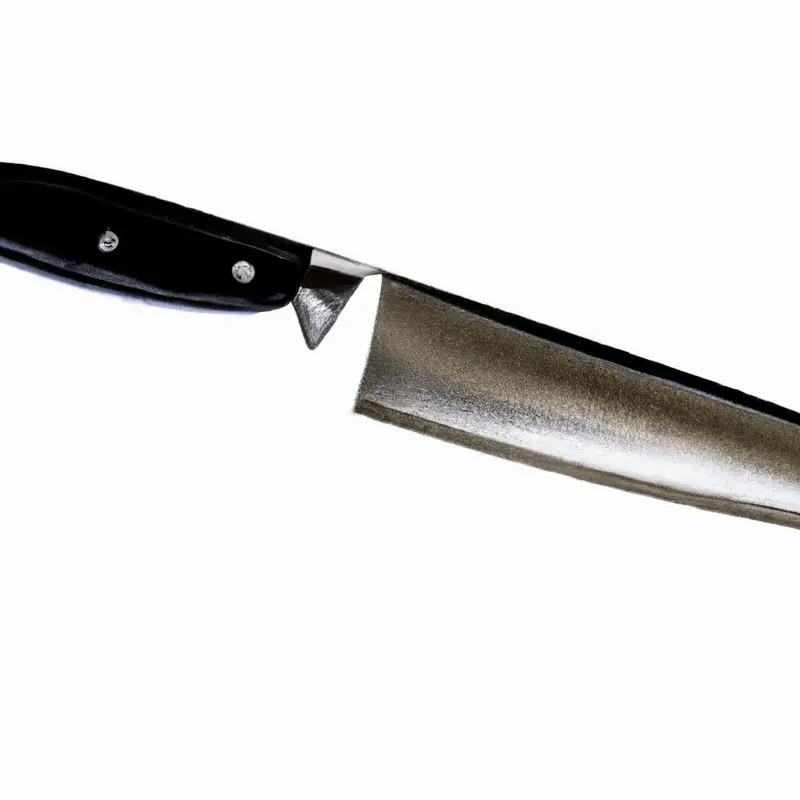
Final Verdict
Using a serrated knife for slicing bread offers numerous benefits. Firstly, it ensures clean and effortless slicing, preventing the bread from getting crushed.
Additionally, it helps maintain the texture and freshness of the bread, ensuring a satisfying eating experience.
Moreover, a serrated knife is suitable for various bread types, allowing you to slice through crusty loaves, soft rolls, and everything in between. Lastly, the versatility of a serrated knife extends beyond bread slicing, making it a valuable tool in the kitchen.
Overall, investing in a good serrated knife and mastering proper slicing techniques can greatly enhance your bread slicing experience.

